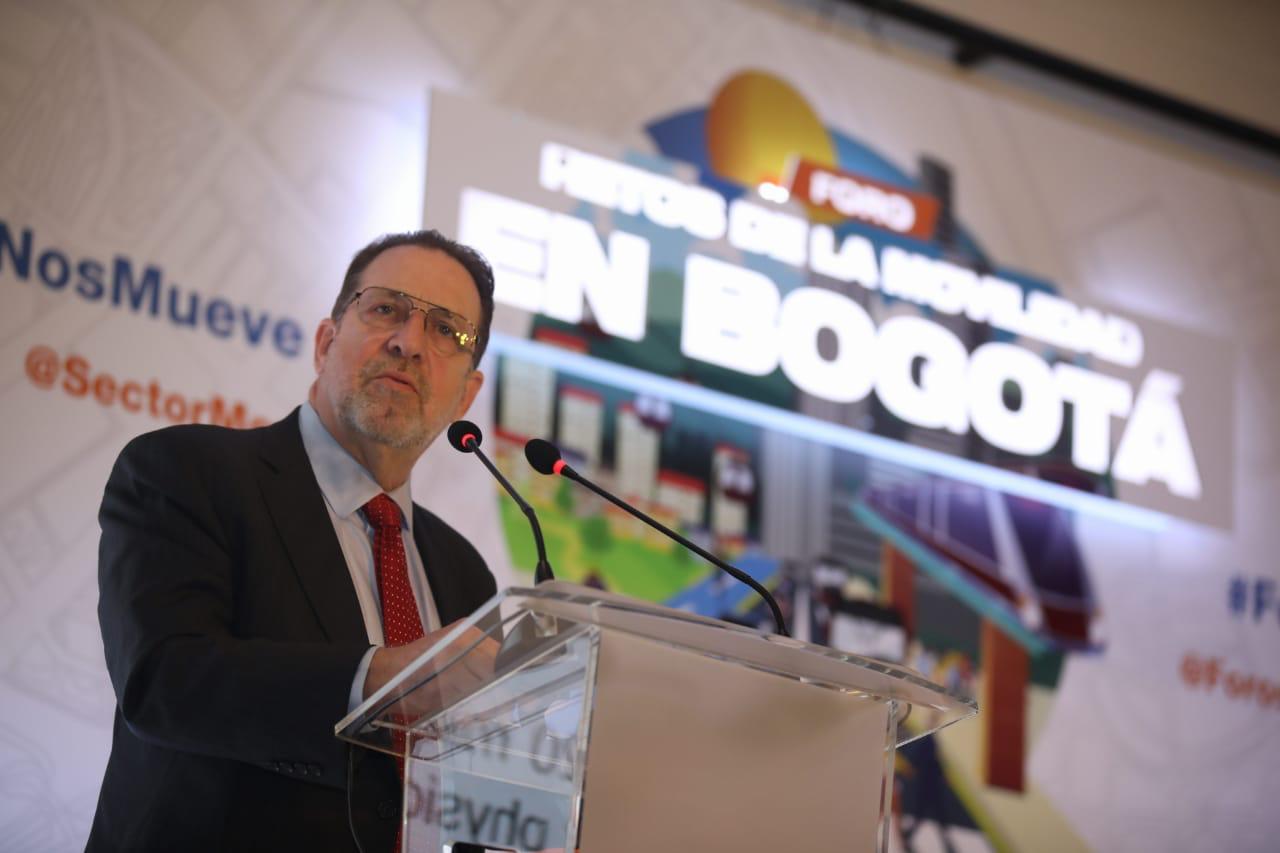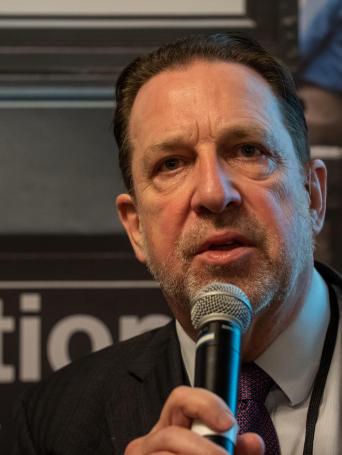DOT Deputy Commissioner for Policy Michael Replogle is certainly not a household name in the Streetsblog universe, but that's only because he played his vital role in the background in his six-plus years as a high city official. Think of the policy shop as the “big picture” unit inside an agency whose larger mission — move stuff around — hasn't changed. But Vision Zero? Dedicated bus lanes? Battling community boards? Bike lanes? Citi Bike expansion? Automated vehicle testing? Climate change strategies? Replogle has seen it all (even if you haven't seen him). On Friday, Replogle marked his last day on the job (he's leaving for personal reasons that you don't need to know about), but we expect to see him again, perhaps at the next mayor's DOT. In any event, he chatted with Streetsblog's Gersh Kuntzman about the challenges of inter-agency work, the importance of strong leadership, his concerns about the future of automated vehicles, and more. What follows is a lightly edited transcript.
Gersh Kuntzman: Let's start with the idea of leadership. If you look at the mayoral race, it's amazing how seven or eight years ago there was one guy, Bill de Blasio, who talked about issues like the Green New Deal, or the desire to have more cycling, or better bus lanes, etc, and now everybody is talking about these issues. But there’s a large problem in our city right now: when I talk to people about these issues, everybody’s behind them. But then you talk about how it could get done, like for example, “Hey on Hylan Boulevard, we want to remove 300 parking spaces to make a dedicated bus lane," people freak out. Or on 34th Avenue in Jackson Heights, where DOT has created the open street that worldwide could be acknowledged as a leading effort during Covid, you now hear pushback against the idea of a permanent open street because of the notion that maybe people would have to give up parking. Could you speak about the challenge you faced in that arena, and give any advice about what needs to be done in the next administration?
Michael Replogle: I think its heartening that all of the candidates for mayor are basically saying that they want to do most of these things that the de Blasio administration did to advance the sustainable transportation, and they want to do those things more, faster, and with greater intensity. And no doubt that will present leadership challenges for whoever takes that post — the city is constantly hampered by the governing structures that we’re caught in. The state controls a lot of what the city can do, so we end up having to make second-best choices in many cases because of politics, or because we don’t have the authority under the city charter, or we have to get permission from Albany to do something.
So finding ways of establishing a better relationship between the mayor and the governor, and between the city and the state, certainly could help facilitate more timely progress on a lot of these things. I think the next mayor and members of the council will have to face the challenge of how to build coalitions that can be supportive in these areas that can be deeply controversial, like loss of parking. Despite these challenges, I think we’ve got some really outstanding models that we’ve developed through our response to COVID, which will give whoever is next in office some really good material to work from, and successes to point to, which will I think make it easier to have faster progress.
Kuntzman: As that guy once said, "Never let a crisis go to waste." You talked about those second-best choices you needed to make in some cases, but DOT has so much power to establish dedicated bus lanes, busways for example, which was so successful on 14th street and so successful elsewhere...
Replogle: Yes!
Kuntzman: ... but so controversial! So this barrier you speak of is interesting: you mentioned that state partners don’t always make things easy, and also on the community board level, but really you guys have so much latitude anyway. Do you feel frustrated that even more wasn’t done? That a busway on 14th Street didn’t automatically lead to five of those in every borough? On some level, you've got to be frustrated that you can’t do what you probably consider the easier jobs.
Replogle: I certainly aspire to see more accomplished than we were able to accomplish during this term, but that said we have had very strong leadership at this agency, from Janette Sadik Khan, to Polly Trottenberg, to Margret Forgione, to Hank Gutman [current DOT commissioner]. Each of them has brought a different leadership style to the agency, and I found it easy to work with each of them, to try and advance things. Often the challenges lay in that triangulation: We do what an agency can do day to day, but City Hall needs to take into account other factors such as "What can we get NYPD to do" and "How do we deal with the state Assembly member or state Senator who wants to weigh in on these issues?" There are a lot of issues in play, and often issues tangential to transportation become impediments to our making progress in transportation; good progress gets held hostage to other issues.
Kuntzman: What do you mean?
Replogle: Well, it took us four years to get through the state legislature for the reauthorization of speed cameras and to expand the time in which they could be used and the locations, and even now that fight continues. That got hung up on issues around standards for yeshivas — something that really didn’t have much to do with transportation. I think that’s where city hall gets caught in a box. I sense the frustration that you feel from your angle on this, but our agency is doing the best it can with the resources we’ve got.
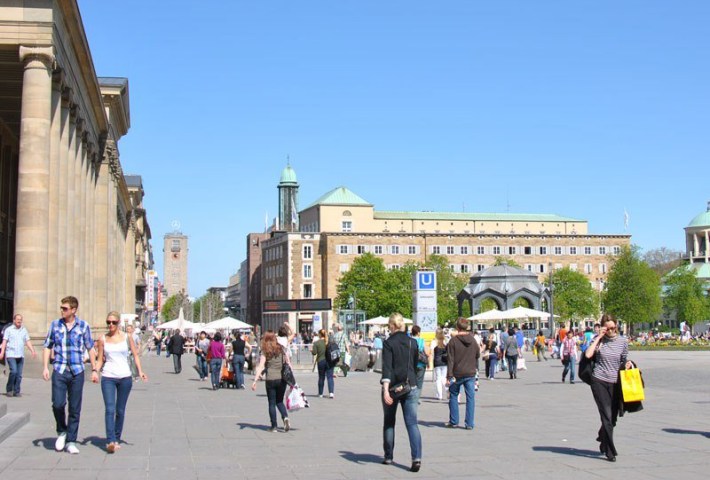
Kuntzman: (laughs) "The best it can do" depends on your perspective. The perspective of someone in your Bridges division would be very different from the perspective of someone in your biking division, I would imagine, or the public space division.
Let's stay on the topic of different levels of success within DOT divisions. One of the issues we talk a lot about that you've worked on is the open streets and open restaurants program, which was really so successful. It was a quick build, which needed to be done at that time, but there are longer-term issues with creating permanent truly safe public spaces, pedestrian plazas for example. I know you guys create those spaces, but not on a massive scale in terms of what some of our readers call for. Many people complain, "Why isn’t X avenue a car-free plaza from what street to whatever street?" I know you guys have to ram projects through community boards, and you’ve got to get the mayor on board with that, but at the end of the day, NYC doesn't have these permanent pedestrianized places like other cities do. Talk to me a little about the frustration there. Like I said the Bridges division can look at the "level of service" of your roadways and say, "Hey, our level of service is awesome," but your bike division can look at the level of service and say, "Well, its not as awesome as it should be." Are these different levels of success within DOT frustrating?
Replogle: As you would expect within an agency this large, there is healthy tension between different parts of the agency over a lot of these things and for me its been satisfying to sit in the policy shop of the commissioner's office trying to help divisions break out of their silos, and to talk to each other more effectively, and where things have been stuck try to unstick them. The policy unit that I’ve headed is basically a sort of think-do tank within the agency, and we’ve done a number of pilot projects in different areas — car sharing, bike sharing, scooter sharing, and the like. We’re now about to launch electric vehicle charging, and those pilots have all generally proven themselves to be pretty successful, and gone on to be made permanent.
The pace of change has been frustrating to me. We are often encumbered by our procurement rules. I wish honestly that several years ago we might have started a process to take a franchise, to develop multiple bicycle parking units around the street like Oonee was trying to do, but our procurement rules, and our plaza rules, under the city charter, prevent us from rolling that out unless we go through a franchise process, which is about a three-year process and requires city council approval. This is common in our work: things that on the surface look like they ought to be simple and nimble and quick often take longer.
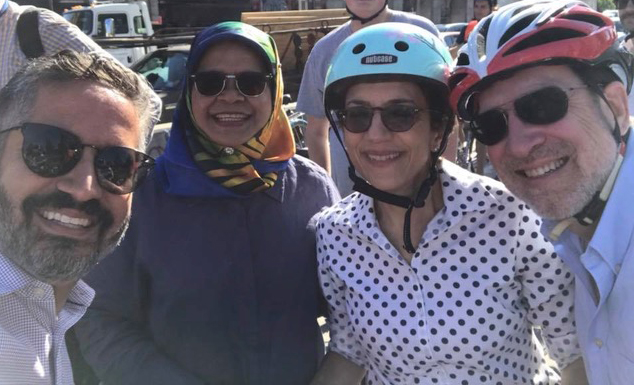
I think that the open restaurants program is a good example of things being much harder than they should be. Some of our own rules and regulations have been put into place in response to political pressure to make sure community boards have a strong voice in whether a restaurant would have sidewalk seating, tables, and to make sure we went through a detailed and fairly expensive process to design and engineer those treatments on a runoff basis. During COVID, those rules were getting in the way of saving the restaurant industry, so we found a way during the crisis to identify the need for a nimble scaling of an open restaurant program, we had 6,000 open restaurants three weeks after we first put that idea together, and I think that's a lesson that we should take and apply to more places.
Kuntzman: That’s the kind of thing that I’m talking about. We’re going to move out of a crisis and a lot of the people are going to come back to community boards and say, "I was never consulted!" and "Yyou gotta undo all the great stuff that you did," which most of us think would be absurd because it was so successful.
Replogle: We saw this around the pedestrianization of Broadway a few years ago, which was a very successful and popular program. At one point there were suggestions in City Hall that we should take back some of the pedestrianization of Broadway, there was a public outcry saying, "No, we actually like this quite a lot," and I think it might take some public outcry saying, "No, we don’t want to see open streets and open restaurants rolled back." In fact the de Blasio administration is making those programs permanent, and I think we’re trying to move these things as quickly as possible into being irreconcilable, unrollbackable facts on the ground.
Kuntzman: I always come back to all the interviews I did for the council election preview we did earlier this year, where I talked to people who are such strong supporters of climate change initiatives and such strong supporters of the Green New Deal, but then they come back to, "Oh but there are people in my neighborhood that like to drive." Sure, I get that, but at some point, we really do have to reduce the use of the car. The mayor talks a lot about how we need to reduce our reliance on the car almost every time I ask him about it, and DOT can play some role in that.
Replogle: Buses play a role...
Kuntzman (rudely interrupting): Yeah, and if a bus ride from Roosevelt Avenue in Jackson Heights to Astoria would take eight minutes because there's a busway, a lot of people wouldn’t drive to Astoria, because obviously it's hard to find parking anyway. On a personal level it has to be very frustrating.
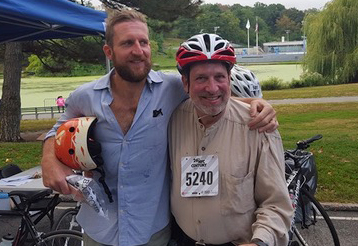
Replogle: It is when we don’t see leadership, and sometimes it's very gratifying when we do see leadership. There are plenty of times where Mayor de Blasio has, in fact, stood up to community boards who’ve said, "No we don’t want a vital traffic safety improvement," and the mayor said we’re going to do it anyway and backed the transportation commissioner. It’s going to take profiles in leadership in the next administration to build on that record of success, and to make sure that the next mayor is even more successful in moving us towards being the more European style city of sustainable transport that we have the potential to be.
Kuntzman: The mayor doesn’t like when I tweak him about what Mayor Hidalgo does in Paris, but she really used that crisis to transform her city for the better.
Replogle: She did. I followed what’s going on in Paris closely, and I think that she’s done some pretty amazing stuff. She’s also working with a city government area that is much more compact. If Paris were reshaped to New York’s geography, it would only cover Manhattan and western Brooklyn/Queens, excluding Staten Island, excluding Eastern Queens, and Northern Bronx. She’s dealing with different politics there than the New York mayor has to deal with.
Kuntzman: Staying on parking for a second, Mayor de Blasio has talked about the pay-by-plate system for so many years. I know it got a little delayed because of COVID, but that solution (fixing placard abuse, preventing city employees from parking all over the place, enabling the creation of pickup and drop-off zones that are timed, and people being charged by different times) is like talking about how, when I was a kid, they said we would all be driving flying cars. I feel like it’s 2021 and this kind of technology must have existed for a while now, and it's still not in place. What can we do to make sure the next mayor does this?
Replogle: I think we’re on the cusp of putting it in place here, with the new meters where they’ll put in your license plate number so that the data from your payment session goes into the cloud and we will be at a place where no longer will the traffic enforcement agent go down the street and look for a little piece of paper on the windshield. Then it becomes much easier to create a culture of compliance around our parking and curb regulations. I think that’s an essential predicate to dealing with the whole placard abuse problems, and to restoring more order to the curbs, to reducing double parked trucks, which present a safety problem. So I’m quite optimistic about whole architecture of plate based enforcement that you described. It's one that I have really been like a dog on a bone for the last six years at DOT, helping our staff promote it and move it to reality. The key challenge on implementation would be getting the collaboration of the Police Department on the enforcement side of that. It’s gonna take the leadership of the mayor and the police commissioner to make that happen. That’s above my pay-grade.
Kuntzman: Sure, but you’re an observer of politics and policy. I think if there is any agency we’ve examined as critically as the DOT, it’s the NYPD. We’ve found them to be, quite frankly, not a very good Vision Zero partner in terms of what we’ve documented. Do you have any comments on the NYPD as a Vision Zero partner?
Replogle: There have been disappointments for sure, along the way, but I think that the Police Ddepartment has come a long way in the six years that I’ve been here, in terms of getting that paradigm shift. Again, it comes down to leadership. Part of it is culture change, too, within the agency, and culture change happens slowly. Again, it’s a question of leadership and what the expectations are that are set by the mayor, and whoever is a future police commissioner.
Kuntzman: You’re a diplomat in the sense that it does come down to leadership, and if I was in your position I would be so frustrated all the time because we have 51 percent of the Police Department that lives in the suburbs, and the vast majority of cops drive to work every day, and have a parking space waiting for them. So even if they're doing their jobs 100 percent right, there’s a culture gap between your biking division, for example, and the NYPD that is not merely bridgeable by appointing a new police commissioner. It’s like you’ve got to change the whole thing, what's that expression, from the root to, um, I'm not a farmer, whatever it is that comes out of the ground. And that’s not something that you could do personally, nor could Hank Gutman do that personally, but it has got to be frustrating.
Replogle: Some of these things are frustrations, to those who are trying to implement more rapid reform. I’ve been working on advancing sustainable transportation for 40 years in a variety of venues from local government to global negotiations and doing a lot of work nationally, and there are no permanent enemies and no permanent allies.
You have to take each of these opportunities from where you are at the time and be really cold-eyed about what are the barriers today, and how we can bridge some of those places of resistance and opposition. We need to either find a way to work through them, or work around them. For example with this curb management thing, some of that can be facilitated by implementing the 21st-century technologies of curb management, and some of it will also take management command structures of the NYPD being used to say to lowly traffic enforcement agents, "We need you to do your job." That’s something that can be done in the kind of military style of organization that the NYPD is, and hence I have some sense of optimism that within the next administration, this is a problem that can be addressed, and it will make the city a much better place to live in.
Kuntzman: As you leave, is there some project that you just wish you had gotten done, that you haven't during your tenure? Or maybe there’s more than one?
Replogle: There is more than one. I would’ve loved to see us build some high capacity bike parking at major transit facilities. As Port Authority Bus Terminal, Penn Station, and other facilities get modernized and rebuilt, the city needs to exert strong leadership to insist that we have to have 5,000 or 10,000 bicycle parking stations in those places so that people can use bikes, leave them overnight, or go from the station to a nearby job or employment, so we can relieve overcrowding in the subway system. We also need better high capacity secure bike parking at some of the outer stations, at the edge of transit deserts in the outer boroughs, because there’s more to be done to provide equitable access for people who don’t have cars or can’t afford cars but often are dependent on them because the transit isn’t as good as it needs to be to get them where they need to go.
I think there are opportunities to expand the use of pedal-assist electric bikes, and e-cargo bikes, and we’re making some really promising progress on that. It has taken longer to get to a place of progress because we had to change the state law to legalize the e-bikes in the first place, but now that we’ve gotten past that, I think we’re seeing some changes there, and hopefully we get some further legislation in the Senate in Albany on legislation of wider e-cargo bikes passed in the next couple of weeks, which will really open up that whole sector.
I think that we could replace 10-15 percent of all trucks in Manhattan within the next several years with pedal assist e-cargo bikes, and it would do wonders for congestion, noise, and air pollution, as well as reducing greenhouse gas emissions. These are opportunities that we’ve demonstrated, and our e-cargo bike program is showing that we get a one-to-one reduction of truck miles for e-cargo bike miles when we substitute, when they’re substituted by the private sector.
Kuntzman: Yeah, but more cargo bikes means that we're going to come back to you for wider bike lanes because presumably if you replace a lot of those trucks with cargo bikes, you can repurpose the roads a little bit.
Replogle: We need more bike lanes, wider bike lanes, and more bus priority across the city, without a doubt, and I’m very proud of what we did with 14th Street, and I’m very heartened that we’re going to be developing many more bus rapid transit quarters like that in the future.
Honestly, we should be focusing our bus priority measures most especially on the places where the most bus riders suffer the most congestion and delay, even though those are the hardest places to put these, because they create obviously the greatest potential backlash in terms of other traffic displacement. But those are the places where you get the biggest bang for the buck. And that counts really more than the number of miles of the busway, which everyone tends to fixate on.
Kuntzman: Well that’s true. Finally, I’m going to play the Devil’s Advocate: I’m asking on behalf of the people who don’t like what you do. You’ve been in the middle of Vision Zero for a long time, and Vision Zero is a signature initiative of the de Blasio administration, and we at Streetsblog and the street advocacies community have obviously covered very closely the successes of it. But we’re not at zero, which means that we're constantly hearing that inane frustration from car drivers, car owners, car enablers in the council who say, "Well you’ve just waged this war on cars, and you didn’t even get to zero; in fact you got to about 200 and now its ticking up again, and you’re cutting the speed limits, cutting the places we can drive, and now you want to give more of our space to restaurants, and culture, and pedestrians, and you didn’t even get to zero." What’s the best pushback to that attitude that Vision Zero was a failure?
Replogle: Well I think the best pushback is that seven out of the last eight years have been the safest on record in NYC, we’ve cut pedestrian deaths by a third since the pre-Vision Zero era while the rest of the country pedestrian deaths are up by 30 percent or 40 percent. Meanwhile, we’ve seen changes in vehicle design: a lot more utility vehicles and trucks that have higher grills that are more fatal. They hit pedestrians and vulnerable road-users, and since COVID hit, we’re seeing a lot more highly irresponsible aggressive and fast driving, which is deadly. That’s what accounts for most of the rise in vehicle deaths that we’ve seen in the last year.
So is the answer to stop what has reduced our pedestrian deaths and traffic deaths compared to the rest of the country? No! The answer is to do what we’ve been doing more effectively, like increasing the hours we can operate our speed cameras, putting them in more places, doing more automated enforcement and reducing speed limits where that makes sense, and pressing the federal government to be a better partner, by insisting on safer vehicle design.
